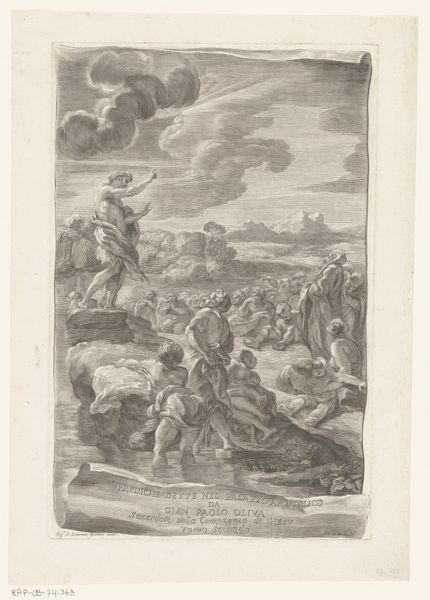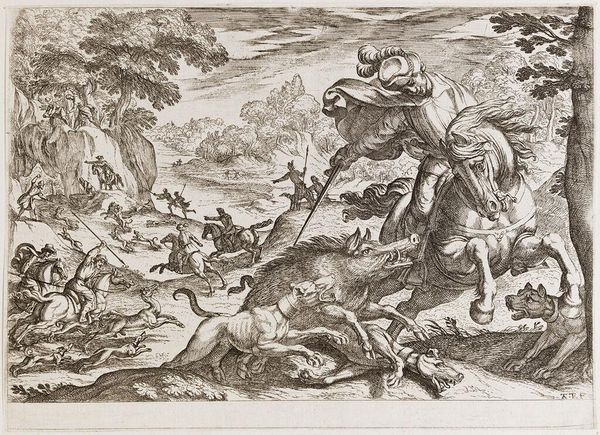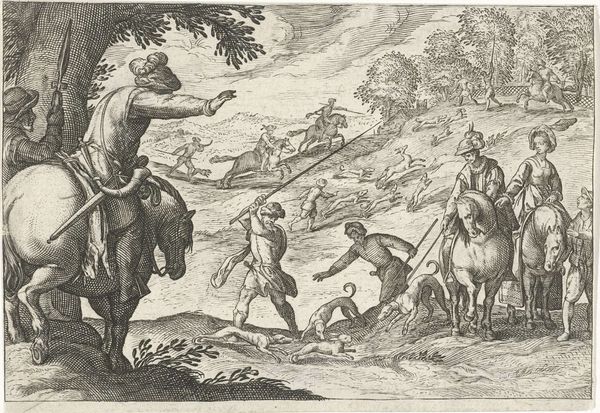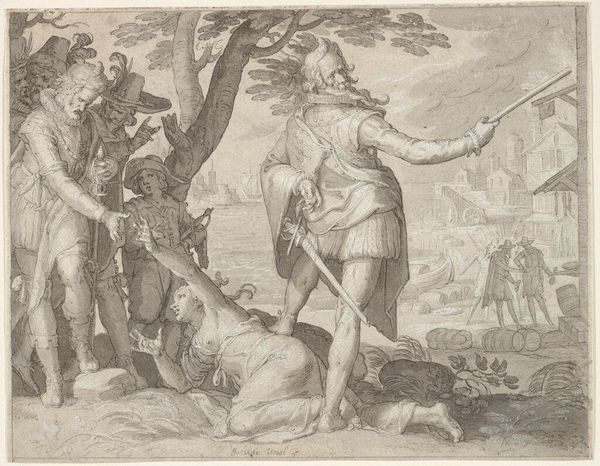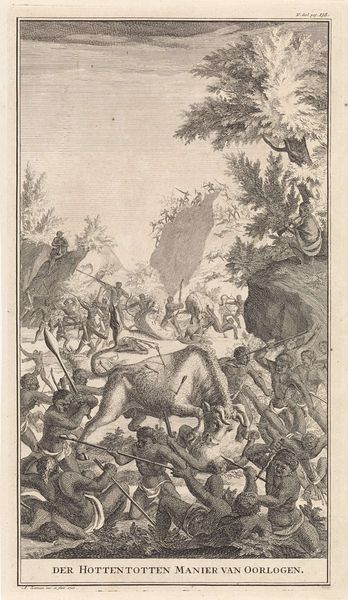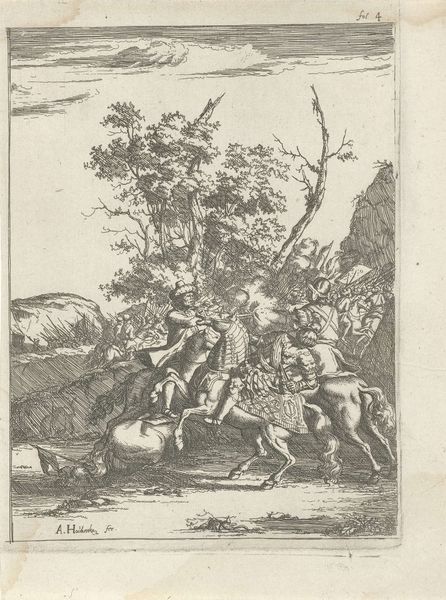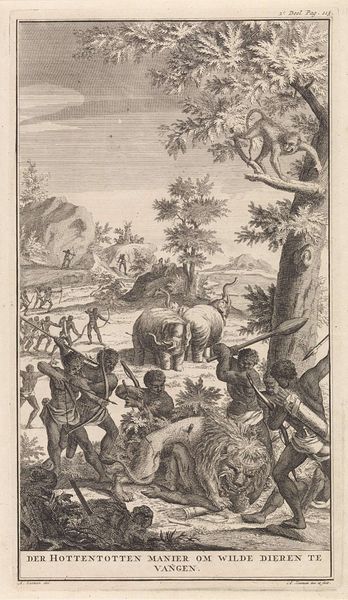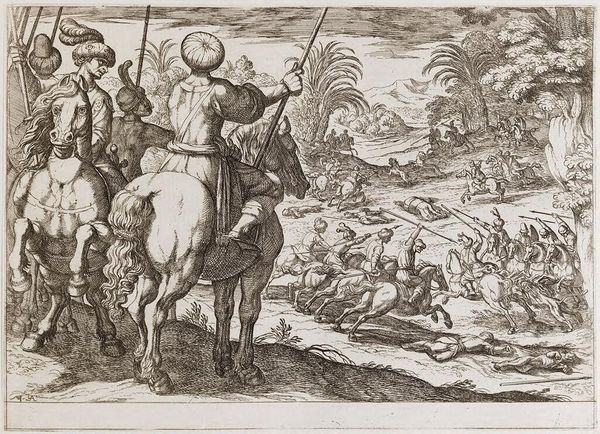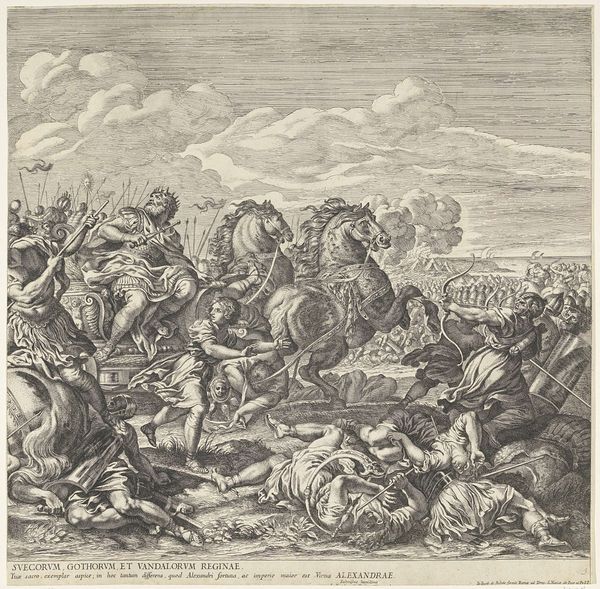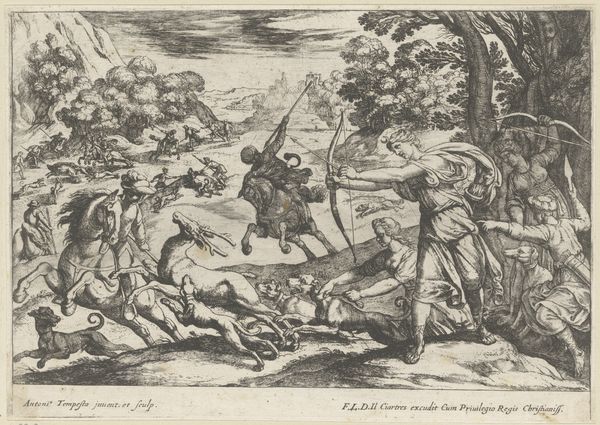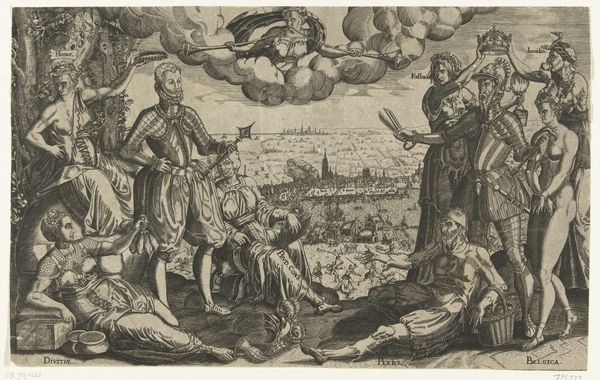
engraving
#
narrative-art
#
baroque
#
figuration
#
history-painting
#
engraving
Dimensions: height 222 mm, width 177 mm
Copyright: Rijks Museum: Open Domain
Jan Lamsvelt created this etching, "King Saul Falls on His Sword", sometime around 1742. The composition is dominated by sharp, dynamic lines that capture the chaos and violence of the depicted scene. Note how Lamsvelt uses dense hatching to create deep shadows, particularly around the figures, heightening the drama. This dramatic use of light and dark isn't just aesthetic. It serves to emphasize the moral and existential crisis of King Saul. Lamsvelt directs our eyes to the fallen king. The etching captures a pivotal moment of collapse, not just of a man, but of a kingdom. Consider how Lamsvelt uses linear perspective to draw the viewer into the scene, making us active witnesses. The dense, almost claustrophobic composition mirrors the psychological turmoil of its central figure. The artist shows us that the act of representation is never neutral but is always embedded in broader cultural and philosophical frameworks.
Comments
No comments
Be the first to comment and join the conversation on the ultimate creative platform.
